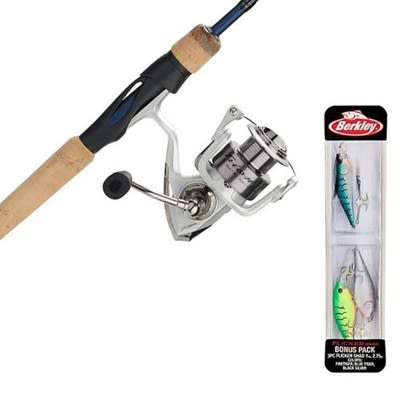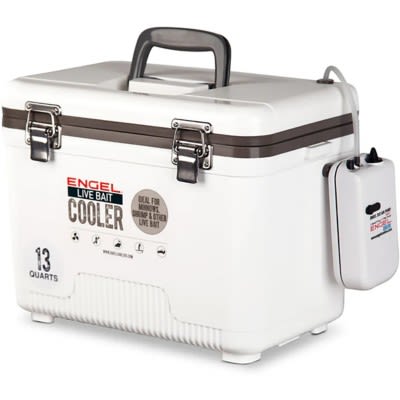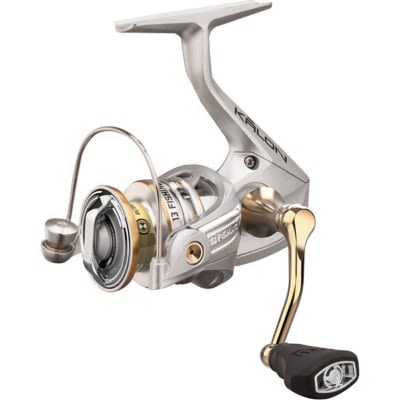Today's Best Fishing Times
Get the best fishing times for Collinwood Lake with Lake-Link's Fishing Forecast. SEE MORE
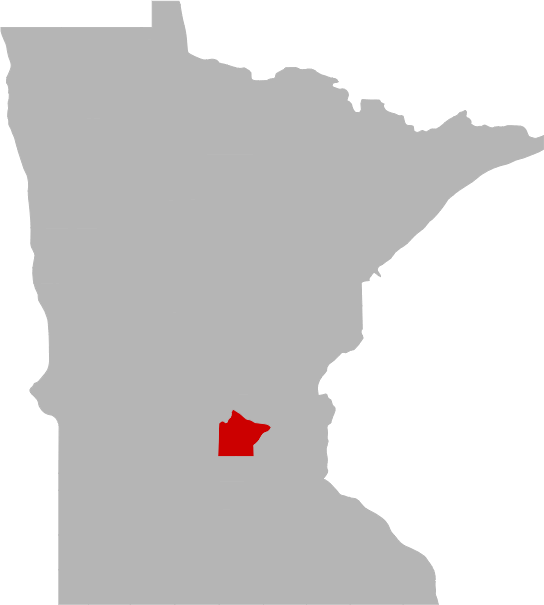

Share Your Catch & Win!
Frequently Asked Questions About Collinwood Lake, MN
- How big is Collinwood Lake?
- How deep is Collinwood Lake?
- What kind of fish can you catch in Collinwood Lake?
- What are the closest cities to Collinwood Lake?
- Are there places to stay in the Collinwood Lake area?
- Are there boat launches on Collinwood Lake?
- Are there places to eat and drink near Collinwood Lake?
- What is the average air temp for Collinwood Lake?
How big is Collinwood Lake?
How deep is Collinwood Lake?
What kind of fish can you catch in Collinwood Lake?
Other fish species in the lake include Central Mudminnow, Fathead Minnow, Golden Shiner, Green Sunfish, Hybrid Sunfish, Iowa Darter, Orangespotted Sunfish, Silver Redhorse, Spottail Shiner, Tadpole Madtom and White Sucker.
What are the closest cities to Collinwood Lake?
Are there places to stay in the Collinwood Lake area?
More Lodging Options
Are there boat launches on Collinwood Lake?
Are there places to eat and drink near Collinwood Lake?
Explore the Collinwood Lake area in a RV
Are you looking for an adventurous vacation option that won't break the bank? Look no further than renting an RV! Contrary to popular belief, the process is much simpler than you might imagine. With just a few easy steps, you'll soon be experiencing the ultimate freedom and convenience of exploring the open road in your very own recreational vehicle. And the best part? RV travel can save you up to 60% compared to other types of vacations! With the money you'll save, you'll be able to travel even more and create unforgettable memories along the way. So why wait? Start planning your next adventure today with an RV rental. Learn more about renting a RV.



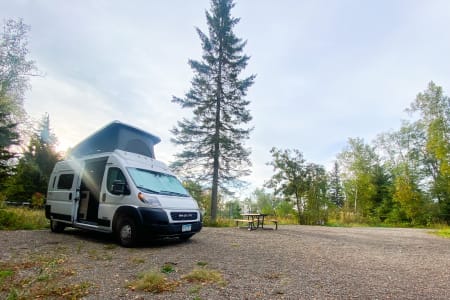
History & Status of the Fishery
A standard survey was conducted at Collinwood in 2016 to monitor the lake's fish population. A total of 12 species were sampled in the gill nets, trap nets, and by spring night-time electrofishing. The lake was not stratified on 7/11/16, with the dissolved oxygen concentration being 2.8 mg/l just off the bottom in 26.0 feet of water, allowing fish to use all parts of the lake. Water clarity was poor with a secchi disk reading of 4.0 feet, due to an algae bloom. A fishing pier was available to anglers at the Wright County Park on the east side of the lake.
In 2016, gill nets sampled lower numbers of Northern Pike (4.1/net), which was within the normal range for lakes similar to Collinwood. The 2014 catch rate was similar at 5.8/net. Catch rates from 1958 to 2016 (n=13) were highly variable, ranging from 0.0 to 18.9/net with an average of 5.9. Historically, recruitment could be classified as moderate at Collinwood Lake. A large and highly connected watershed, to the southwest, allows Northern Pike to move into many different lakes (Maple, Big Wolf, Jennie, Todd, Hook, Pigeon, and Jewitt) and shallow wetlands (possibly high quality spawning habitat), freely when water levels are high enough. Several of those mentioned lakes have had high numbers of Northern Pike in recent years. In 2016, gill netted Northern Pike were 17.4 to 30.8 inches long with an average of 21.1. Approximately 51% of the gill net sample was 21 inches or longer, but only three fish were 25 inches or longer. Northern Pike were last stocked in 1992 and natural reproduction has provided a sufficient fishery for many years. Northern Pike were age-1 to age-4, with four year classes being present. Age-2 fish were the most abundant, accounting for 59% of the gill net aged fish. Growth was moderate to fast, with age-2 fish reaching 19.0 inches after two summers of growth.
Trap nets did not sample any Black Crappie in 2016. This was the lowest catch rate on record at Collinwood Lake. The 2012 catch rate was also low (4.0/net). Catch rates from 1958 to 2016 (n=13) were variable, ranging from 0.0 to 35.8/net with an average of 10.5. Gill nets sampled low numbers of Black Crappie (5) for a catch rate of 0.6/net, which was below the normal range for this type of lake and the lowest ever recorded at Collinwood. Catch rates from 1958 to 2016 (n=13) were highly variable, ranging from 0.6 to 75.0/net with an average of 22.7. The last six gill net catch rates (1999 to 2016) have been decreasing, possibly indicating a downward trend in relative abundance. Gill netted black crappie were 7.8 to 10.8 inches long with an average of 9.2. Black crappie were age-2 and age-3, indicating very poor recruitment. Growth was fast. The decline in Black Crappie relative abundance since 1999 was of concern and the trend was likely related to competition, forage, and/or predation. From 1995 to 2016 the relative abundance of Walleye, a known predator on small Black Crappie, has been on the high side, averaging 14.2/gill net. Spawning habitat was believed to be sufficient for Black Crappie at Collinwood Lake. Since Black Crappie have such high reproductive potential they were rarely limited by reproduction.
Gill nets sampled high numbers of Walleye (88) for a catch rate of 9.8/net, which was above the normal range for lakes similar to Collinwood. Walleye were the most abundant fish sampled by gill nets in 2016. The 2014 catch rate was also high (13.5/net). The latest seven gill net catch rates were all above the normal range. Catch rates from 1958 to 2016 (n=13), under various stocking regimes, were highly variable ranging from 2.1 to 25.3/net with an average of 11.3. In 2016, gill netted walleye were 10.2 to 26.0 inches long with an average of 15.0. Approximately 44% of the gill net catch was 14 inches or longer, while 18% were 20 inches or longer, indicating a quality size structure. Walleye were estimated to be age-2 to age-9 with seven year classes present. Only the 2014 year class was ranked as strong, accounting for 55% of the catch. The contribution from natural reproduction during stocked years (fry and fingerling) was unknown. Skip years (non-stocked) in the stocking regimes accounted for 9% of gill net aged walleye. In 2016, growth was fast for older year classes, but slow for age-2 fish. It was likely that after two strong year classes were produced in a row (2013 and 2014) the lake's forage base was greatly suppressed, explaining the slow growth of the 2014 year class. Gill net catch rates from 1995 to 2014 (n=6) during the old stocking regime (1991 through 2011 - 351 pounds of fingerlings every other year) ranged from 7.6 to 25.3/net with an average of 14.9. The current stocking regime (351,000 fry every year) was initiated in 2013, with hopes of developing stronger year classes at Collinwood. Gill netting in 2016 (fry regime) produced a catch rate of 9.8/net. Fall electrofishing assessments, targeting young of the year Walleye, in 2013, 2014, and 2016 (fry stocked years) produced three out of four of the highest catch rates on record. The average fall electrofishing catch rate from fingerling stocked and skip years was 48.3/hr., while the average from fry stocked years was 205.3/hr., indicating that fry stocking was capable of producing large young of the year Walleye catches. Fry were not stocked in 2015 in order to slow the predation demand of young walleyes on the lake's forage base.
Gill nets sampled low numbers of Channel Catfish (8) for a catch rate of 0.9/net. The 2014 catch rate was six times higher (5.4/net). Historic catch rates (n=13) were generally low, ranging from 0.0 to 5.4/net with an average of 0.7. Channel Catfish were last stocked in 1989 and were first gill netted in 1986. In 2016, Channel Catfish were 20.4 to 24.4 inches long with an average of 22.7. The gill and trap net size distributions indicated that reproduction was inconsistent.
Trap nets sampled low numbers of Bluegill (12) for a catch rate of 1.3/net which was below the normal range for lakes similar to Collinwood and the lowest ever recorded at Collinwood. The 2014 catch rate was similar at 1.4/net and the second lowest on record. The last five catch rates (1999 to 2016) all were decreasing, showing a possible negative trend in relative abundance. Catch rates from 1958 to 2016 (n=15) were variable, ranging from 1.3 to 28.2/net, with an average of 10.1. In 2016, trap netted bluegill were 3.5 to 9.3 inches long with an average of 5.9. Bluegill were age-1 to age-6 with five year classes being present. Data indicated that recruitment was inconsistent. Inadequate natural reproduction was seldom a problem for Bluegill and quality spawning substrates are common at Collinwood. Aquatic vegetation (submergent and emergent) provides cover and feeding grounds for young Bluegill. Collinwood's marginal aquatic plant community is likely a major limiting factor on this species. Lake shore owners are encouraged to preserve what little aquatic vegetation is present. Curlyleaf Pondweed can provide some cover during May and June, but when it senesces in July, young fish likely become more vulnerable to predation.
Spring night-time electrofishing sampled 7 Largemouth Bass for a catch rate of 6.2/hr., which was the second lowest on record for Collinwood Lake. The 2011 catch rate was the lowest on record (2.7/hr.). Catch rates (n=8) from 1991 to 2016 were variable, ranging from 2.7 to 41.3/hr. with an average of 17.2. Largemouth Bass were 9.1 to 16.2 inches long with an average of 12.2. Largemouth Bass (electrofished and trap netted) were age-2 to age-7 with five year classes present. Growth was moderate. Data indicated inconsistent recruitment for this species. Largemouth Bass were likely not doing well for the same reasons that the Bluegill were not flourishing; there is marginal submergent vegetation which provides cover and feeding grounds for young fish.
Gill nets sampled low numbers of Yellow Perch (12) for a catch rate of 1.3/net, which was below the normal range for lakes similar to Collinwood and the second lowest ever measured at Collinwood. The 2012 and 2014 catch rates were also low, 4.6 and 5.4/net, respectively. Data indicated a decline in relative abundance in recent years. Catch rates from 1958 to 2016 (n=13) were highly variable ranging from 0.3 to 81.7/net with an average of 25.7. Yellow Perch were 7.5 to 9.8 inches long with an average of 8.5. Yellow Perch were age-3 to age-5 with three year classes present. Approximately 82% of the fish were from the 2013 year-class. Recruitment appeared to have been very poor in 2014. Strong Walleye year classes in 2013 and 2014 were likely at least partially responsible for the declining Yellow Perch population at Collinwood.
Trap nets sampled high numbers of Common Carp (60) for a catch rate of 6.7/net, which was well above the normal range for lakes similar to Collinwood. Common Carp were the most abundant fish sampled in the trap nets. Historic catch rates (n=13) from 1958 to 2016 were mostly high, ranging from 2.0 to 26.7/net with an average of 7.5. Trap netted Common Carp were 11.3 to 32.4 inches long with an average of 21.7. Gill nets sampled moderate numbers of Common Carp (25) for a catch rate of 2.8/net, which was within the normal range for this type of lake. Historic gill net catch rates were mostly high, ranging from 0.4 to 11.5/net with an average of 6.0. Gill netted Common Carp were 7.8 to 27.9 with an average of 22.3. Size distribution data indicated that multiple year classes were present. High numbers of Common Carp, over the last 50+ years, have likely had significant negative impacts on submergent plant abundance and water quality in Collinwood Lake. Common Carp would be extremely difficult to control due to the highly connected watershed to the southwest, via Maple and Silver Creeks.
Gill nets failed to sample Black Bullhead in 2016 and this was the lowest catch rate (0.0/net) ever recorded at Collinwood. The 2014 catch rate (0.9/net) was the second lowest on record. Historic catch rates from 1958 to 2016 (n=13) were highly variable, ranging from 0.0 to 281.2/net with an average of 61.8. Trap nets sampled 3 Black Bullhead for a catch rate of 0.3/net which was below the normal range for lakes similar to Collinwood and the second lowest on record at Collinwood. Trap netted Black Bullhead were 13.3 to 13.5 inches long with an average of 13.4. In recent years, some area lakes have experienced declines in Black Bullhead abundance and a similar shift seems to have occurred at Collinwood (1995 to 2016 time period). Since 1995, the average gill net catch rate (13.0/net) was much lower than the average from the 1958 to 1991 time period (118.8/net). Higher numbers of predatory Walleye, during the latter time period, could be partially responsible for the decline.
Additional species sampled in the standard gear included; Bowfin, White Sucker, and Yellow Bullhead.
What is the average air temp for Collinwood Lake?
More Nearby Lakes To Explore
There's more lake's to explore around Collinwood Lake...| DISTANCE | ACRES | MAX DEPTH | |
| Chelgren Lake | 1.1 mi | 54 | 24 ft |
| Maple Lake | 1.2 mi | 139 | 7 ft |
| Spring Lake | 3.2 mi | 203 | 30 ft |
| Wolf Lake | 3.6 mi | 262 | 11 ft |
| Brooks Lake | 3.6 mi | 100 | 21 ft |
| Long Lake | 4.4 mi | 168 | 28 ft |
| Lake Jennie | 5.1 mi | 1,064 | 15 ft |
| Grass Lake | 5.5 mi | 92 | 35 ft |
| Little Swan Lake | 5.9 mi | 51 | 31 ft |
| Lake Washington | 5.9 mi | 2,434 | 17 ft |





